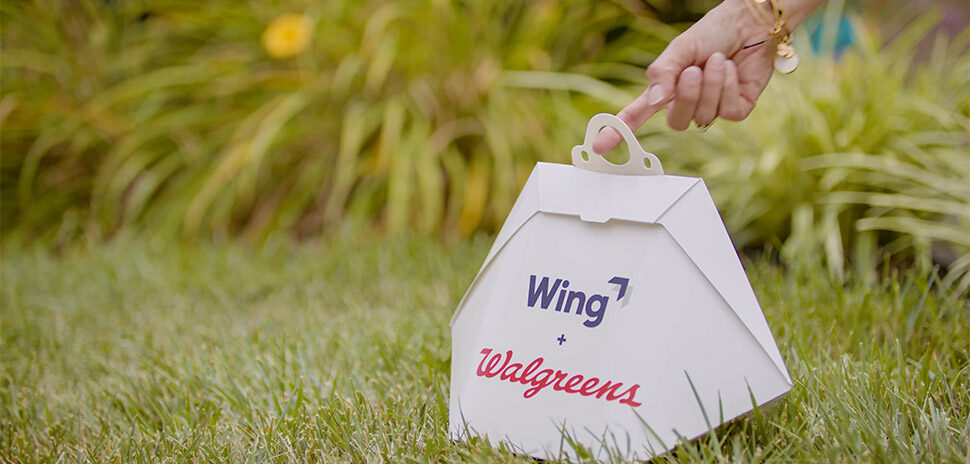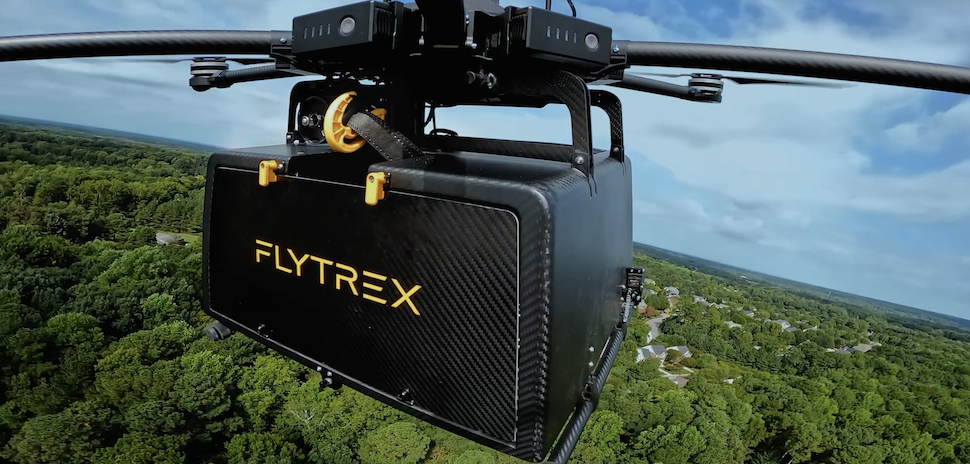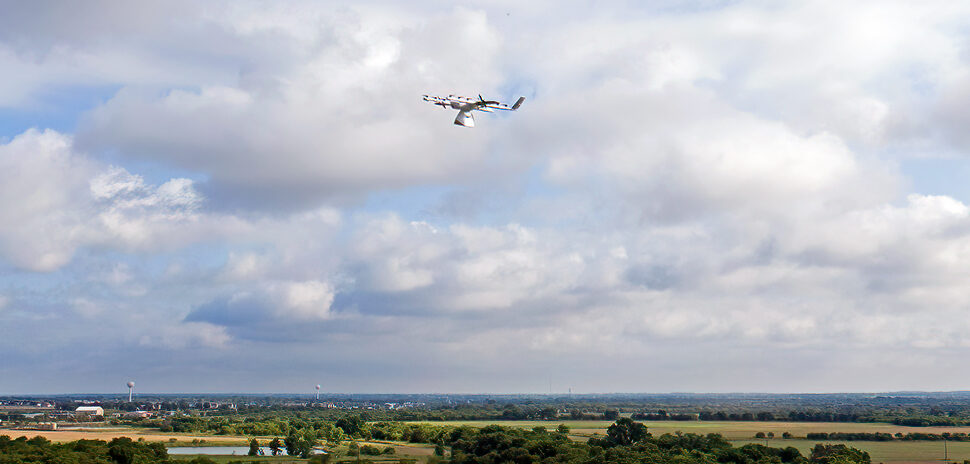Talk about fast food. Today, Israel-based Flytrex began flying chicken wings from a Chili’s in Granbury to back yards and businesses up to one mile away. In flights that average 3 minutes 30 seconds, wings zoom over Lake Granbury, pause above their destination, and are lowered to the ground in a bright yellow bag, while the Flytrex drone hovers 80 feet above.
The service—which is free for customers and cheaper for Brinker International than vehicle deliveries—isn’t the first time Flytrex has spread wings for Brinker. The companies began partnering last year on drone deliveries from a Chili’s in North Carolina, where Flytrex began U.S. operations in 2018 in collaboration with the FAA’s UAS Integration Pilot Program.
Now Flytrex has expanded to Texas, in the first of multiple planned drone delivery stations in Dallas-Fort Worth suburbs. A commercial for the Texas service just dropped today.
Flytrex CEO aimed for the moon, moved on to wings
As we wrote last month, Flytrex co-founder and CEO Yariv Bash was the co-founder and team leader of SpaceIL, a Tel Aviv nonprofit that in 2019 helped lead Israel’s first mission to the moon. The Beresheet (Genesis) robotic moon lander made it to the moon but crashed on its surface, missing out on the $20 million Google Lunar XPRIZE. Bash is still on the SpaceIL board as it attempts a successful landing with Beresheet II in 2024 or 2025.
But first he has some wings to deliver in Granbury.
Flytrex drone is ‘like a Tesla without a steering wheel’
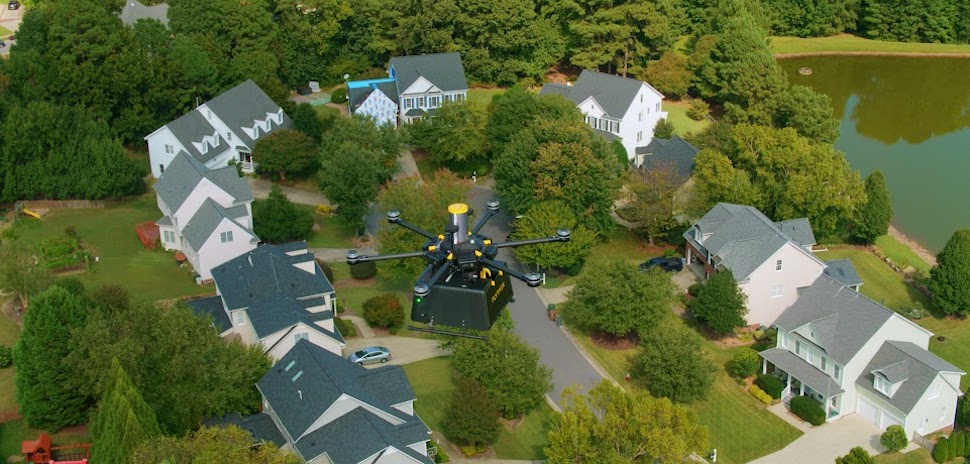
A Flytrex drone making its approach for a delivery. [Photo: Flytrex]
As we noted last month, the Flytrex drone is classified by the FAA as a commercial general aviation aircraft—which means you’d have to own an airline to buy one, Bash says. It’s backed by a “completely autonomous” system with multiple redundancies, reflecting the fact that Israel was until recently the #1 drone exporter on earth, with expertise in both military and homeland security drones. (The U.S. has since surpassed it, Bash says.)
The drone’s propulsion system is built to be quiet, and it remains at 80 feet above destinations to diminish its impact on neighborhoods’ safety and sense of peace.
“If you think about cars, this is the holy grail of the autonomous car,” Bash says of his drone. “It’s a completely autonomous vehicle. It’s like a Tesla without a steering wheel.”
How Brinker embraced drone delivery
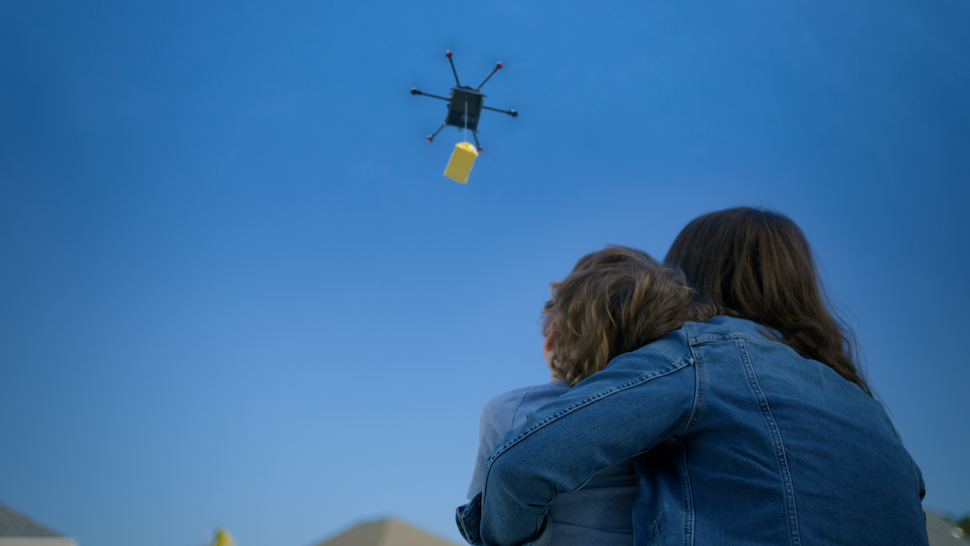
Watching a Flytrex drone lower a delivery from 80 feet up in the air. [Photo: Flytrex]
Dallas-based Brinker International, which has around 1,700 restaurants including the Chili’s and Maggiano’s chains, was looking into drone delivery last year when it discovered Flytrex.
“We’d identified that moving food in a vehicle with a driver to a home that’s two miles away was probably the most inefficient way to deliver food,” Wade Allen, Brinker’s SVP of innovation, told Dallas Innovates. “And so we started investigating drone companies.”
Allen stumbled on an article about a company delivering coffee by drone in Iceland, and learned that it was Israel-based Flytrex. So he called up Flytrex COO Ben Thein.
“He said ‘We’ve launched a very quiet pilot in North Carolina. Why don’t you guys come out and take a look?'” Allen recalled. “And so we jumped a flight, went out to North Carolina, and saw it in action—and were super impressed.”
‘Holy cow, this is fantastic!’
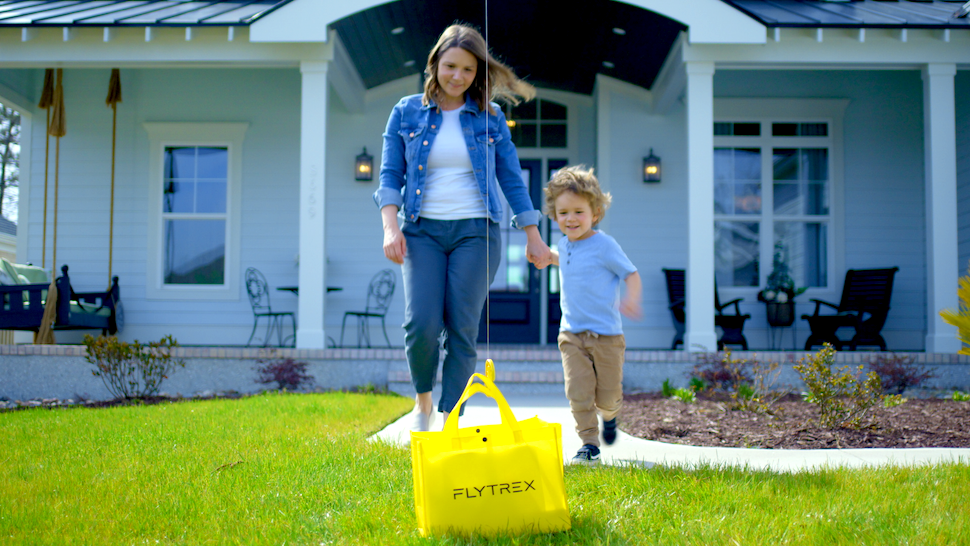
Customers get their delivery, then the drone’s lowering wire reels back up and the drone returns to its home delivery pad. [Photo: Flytrex]
Allen and his team watched Flytrex deliver a Starbucks coffee “without spilling a drop,” then watched them make drone deliveries of prepackaged goods from a local Walmart.
“We thought, ‘Holy cow, this is fantastic!'” Allen said. Before long, Flytrex was drone-delivering wings from a Chili’s kitchen in Holly Springs, North Carolina. (Like the Chili’s location now using Flytrex in Granbury, the only product Brinker drone-delivers so far is its virtual brand It’s Just Wings.)
Why Granbury was selected
To begin Flytrex’s first hub in Texas, both Flytrex and Brinker looked for a “fringe suburb” away from air traffic and freeways but with enough population density to have thousands of households within a one-mile radius. Granbury fit the bill and offered a case-study wrinkle: Vehicle deliveries often have to drive far around Lake Granbury to reach a home, but a drone “can fly right over the water,” Allen said.
Bash says it’s too soon to tell where a second DFW Flytrex station will be located. But Allen says one of Brinker’s “primary goals” is to get closer to the Dallas market. He believes “a suburb east of Dallas” is likely to be the second location, with more to follow.
“There’s a lot opportunity on the north, on the east, on the west, on the south,” Allen said.
Other locations may not be long in opening, Bash told us. Flytrex has learned from its “step-by-step” growth progression in North Carolina, and plans to speed up the process in DFW.
“We’re adding restaurants and we’ll be adding more back yards a lot faster than in North Carolina,” Bash said. “However, since it’s our first station in Texas, we’re still not taking it full-throttle forward. Because it’s a new state, a new population. And we want to make sure that we learn as much as possible and we understand and respect everything that is important to the people of [Dallas-Fort Worth].”
Brinker plans to add more menu items in the future
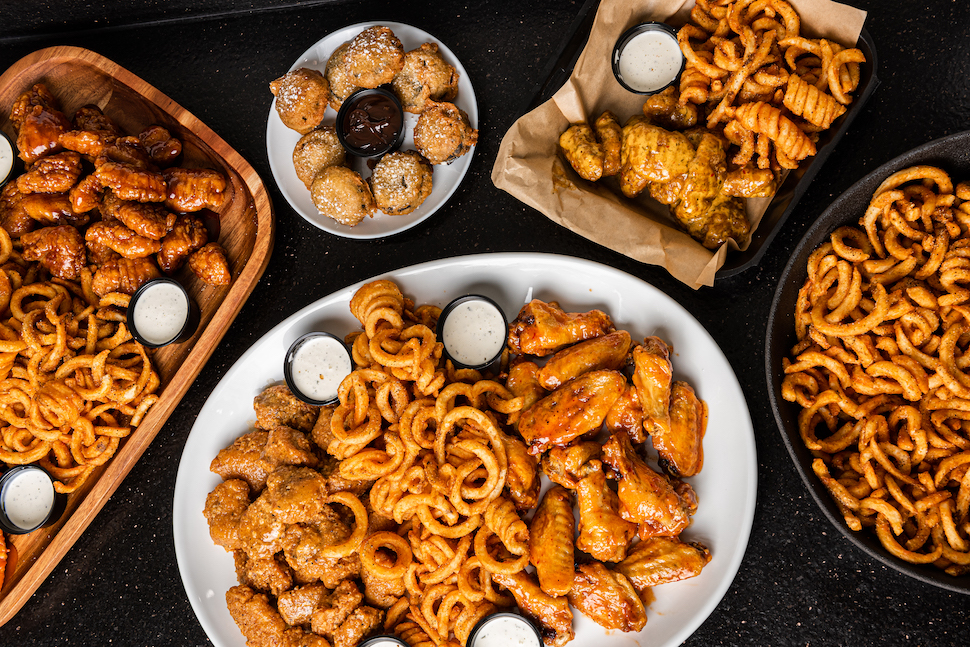
It’s Just Wings menu items can be now be ordered by Flytrex drone in Granbury. [Photo: Brinker International]
“We’ve kept it specifically to wings because we’ve measured the containers that the wings come in and we know the weight and densities of those orders,” Allen told us. “If you order 22 boneless wings with fries, we know how many containers fit in the box that the drone carries and we know the payload. It’s an easy math calculation.”
Brinker aims to eventually use Flytrex to deliver Chili’s menu items and other virtual brands it owns as the collaboration matures. “Chili’s is on the radar,” Allen assured us—so baby back ribs are likely to fly through DFW skies in the future.
Free delivery for customers, cheaper cost for Brinker
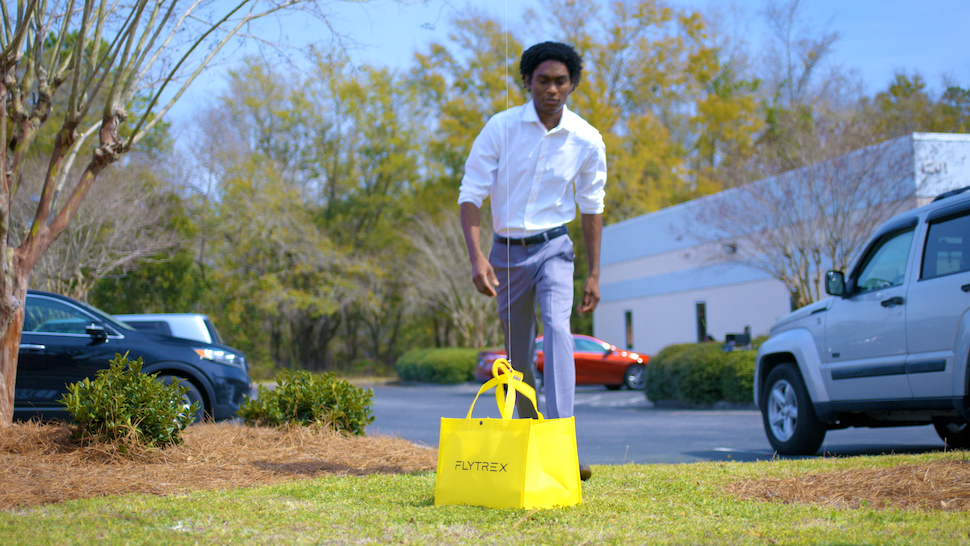
Not just for back yards: Flytrex deliveries can be made to businesses too. [Photo: Flytrex]
At least for now, Flytrex drone deliveries are free to customers no matter what is delivered. Customers order through the Flytrex app and only pay for the items they order. Meanwhile, Brinker and other companies save money by paying less per delivery than they do to vehicle-based companies like DoorDash or UberEats.
Allen told us Brinker’s cost per delivery is “a lot cheaper,” and while he can’t pinpoint it today, “We believe that it’s going to be under the $5 mark, maybe closer to the $4 mark on a delivery in total, as opposed to [vehicle delivery companies] taking a percentage of the check and [charging] a large delivery fee to the guests.”
Flytrex CEO Bash told us his company may revisit charging a delivery fee for customers in the future as it “modifies unit economics and its business model.” But “the goal of Flytrex as a company is to always offer a better service at a more affordable price than any other on-demand delivery service,” Bash said.
Feeling the need for speed
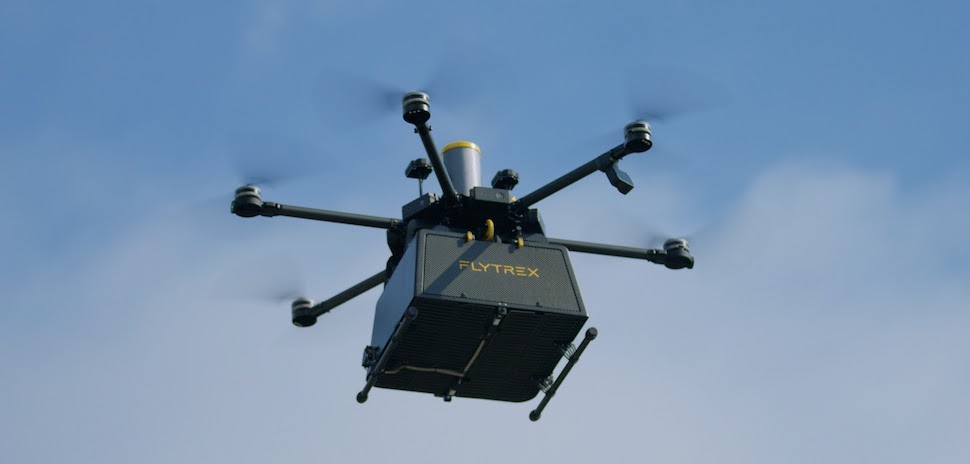
The Flytrex drone can hold up to 6.6 pounds in its package bay. [Photo: Flytrex]
Besides being cheaper for both companies and customers alike, Flytrex offers something else Allen raved about: speed.
“One of the amazing things I’ve noticed is the food comes out of our kitchen just like it would if it was for a DoorDash or pickup,” Allen said. “But the ability then to have it quickly airlifted to someone’s house without any traffic, without any stoplights—as the crow flies to their back yard—is pretty impressive.”
“At times it’s under three minutes. In most cases, our average is about three and a half minutes from the point at which we load the food into the drone to the point at which it’s being dropped into the backyard. So it’s really fast and really efficient.”
Flytrex will have other DFW restaurant and retail partners
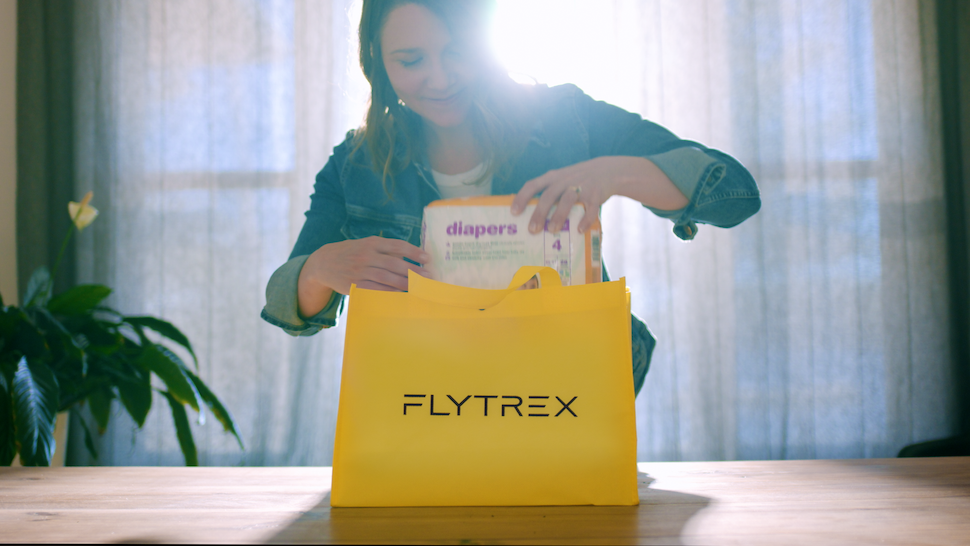
Flytrex will be delivering products from retail stores as well as restaurants. [Photo: Flytrex]
Like the three Flytrex stations in North Carolina’s Raleigh-Durham area, Flytrex will have multiple restaurant and retail partners in each of its Dallas-Fort Worth stations. In North Carolina, Flytrex has made “20,000 deliveries” for businesses including Brinker, Walmart, and Target, Bash said. So far, only the Brinker partnership has been announced in Granbury.
But Flytrex CEO Bash told us Brinker is being especially innovative.
“We’re working with a few restaurant chains, but Brinker is the first one where we’re actually working on a complete integration with their system,” Bash told us from his home in Israel. “So in the future, we’ll offer drone delivery by Flytrex directly from the It’s Just Wings or Chili’s website or app.”
Brinker’s Allen says the integration is coming soon to the It’s Just Wings app. “You’ll be able to identify if you’re in the radius to receive it for drone delivery,” he said.
Unlike the Flytrex app, the It’s Just Wings app will enable customers to add a tip for Flytrex deliveries, which Allen says will be shared by the team that has made the wings and had them delivered.
If Flytrex is ‘Boeing’, Causey Aviation is its ‘American Airlines’
Flytrex has a longtime partner for both its Dallas-Fort Worth operations and its current ones in North Carolina—Causey Aviation Unmanned. Under a newly granted FAA waiver allowing a delivery radius of one nautical mile, Causey’s ground crew will work with Flytrex drones to reach thousands of potential Granbury homes.
“We’re like an aircraft manufacturer, like Boeing or Airbus,” Bash said, “but then you need someone to operate that airplane like American Airlines or United. So Causey are our air operator who are handling all the drone operations on the ground.”
Expanding the FAA-approved flight radius
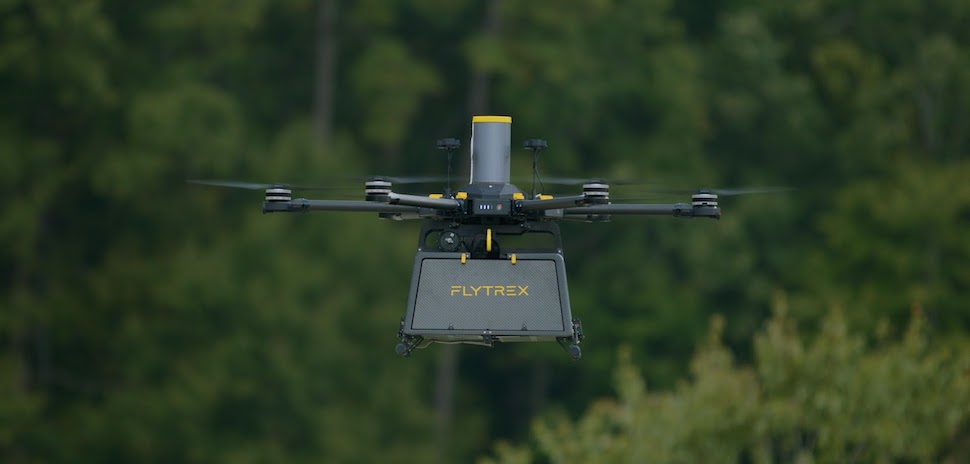
The Flytrex drone—certified by the FAA as a commercial general aviation aircraft—flies at 32 miles per hour with a round-trip range of around six miles. [Photo: Flytrex]
FAA waivers and approval continue to be a key factor in Flytrex growth. Bash told us he’s hoping that by later this year, the FAA may expand the waiver to allow drone deliveries up to a radius of two nautical miles—which will exponentially increase the number of back yards Flytrex can reach.
“The drones themselves can fly to a range of three miles, so that’s like six miles back and forth,” Bash said. “But it’s a work in progress. It’s a marathon, it’s not a sprint working with the regulators—and it should be that way. We want to make sure that our skies stay as safe as they are today.”
Brinker’s innovation goes beyond drones
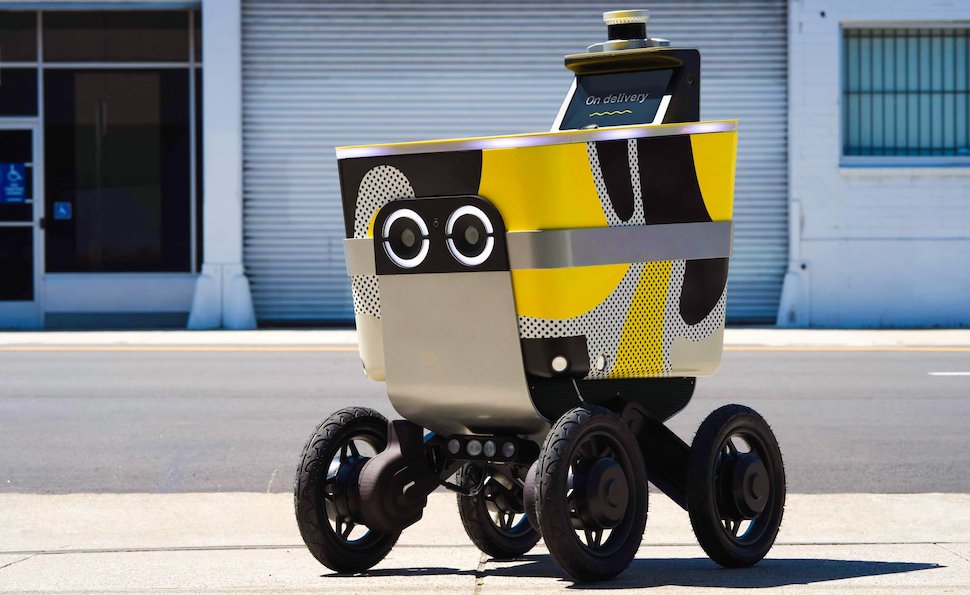
Serve Robotics sidewalk delivery robot. [Photo: Serve Robotics]
Brinker is looking at more than drones to serve its restaurant customers nationwide. Allen says a few of its other innovation projects include exploring sidewalk delivery robots from Serve Robotics (above) and testing Bear Robotics “Rita” table service robots at Dallas-area Chili’s restaurants (below).
Brinker is also looking into using solar power to make its restaurants greener and more energy efficient, and working on “small footprints” that could see the Chili’s brand adopting a smaller menu for a to-go and delivery-only business model. Allen says that’s ideal for college campuses and high-density urban environments.
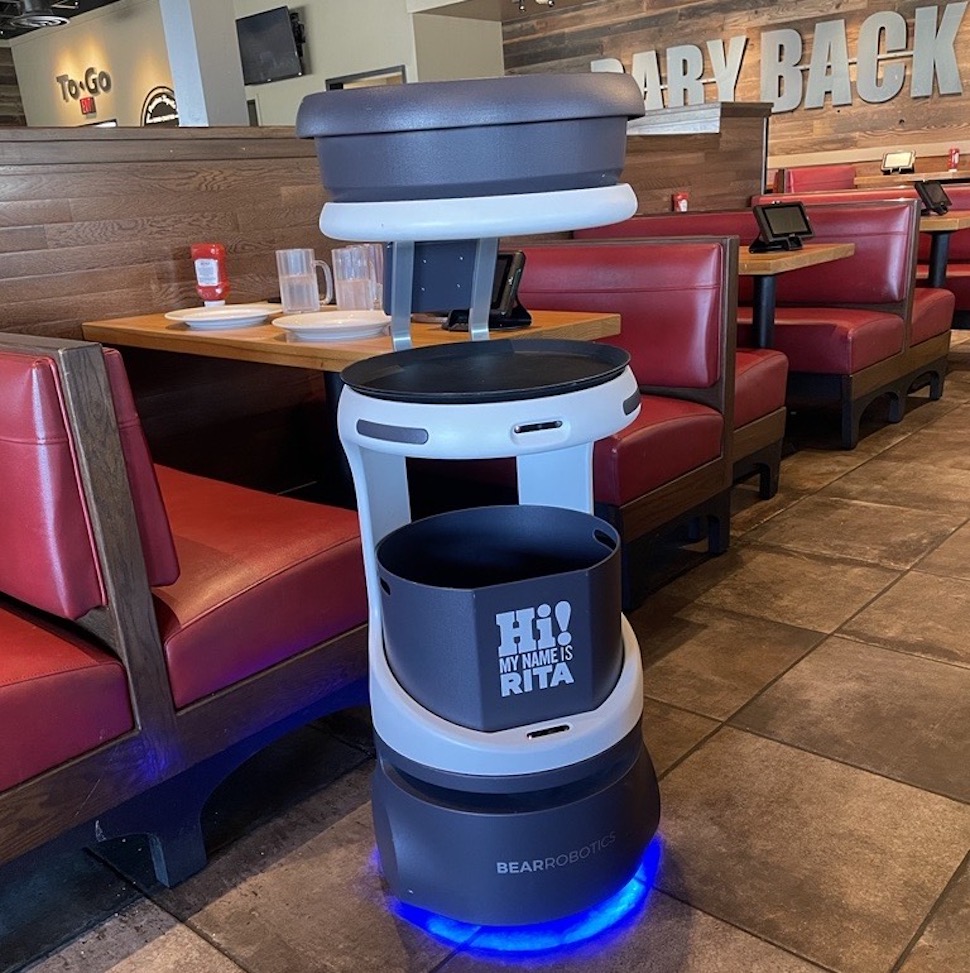
A Bear Robotics “Rita” table service robot being tested at a Chili’s restaurant. [Photo: Brinker International]
![]()
Get on the list.
Dallas Innovates, every day.
Sign up to keep your eye on what’s new and next in Dallas-Fort Worth, every day.

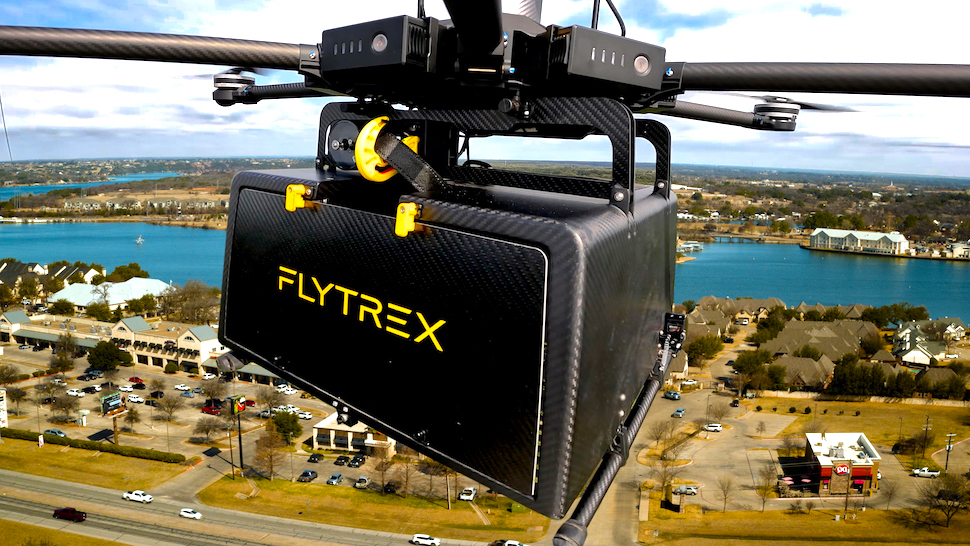
![Pudu offers many commercial service robots. Free 1-week trials of the PuduBot food delivery robot (far right above) are being offered to Dallas restaurants for a limited time. [Image: Pudu Robotics]](https://s24806.pcdn.co/wp-content/uploads/2021/11/Pudu-Robotics-970x464.jpg)

